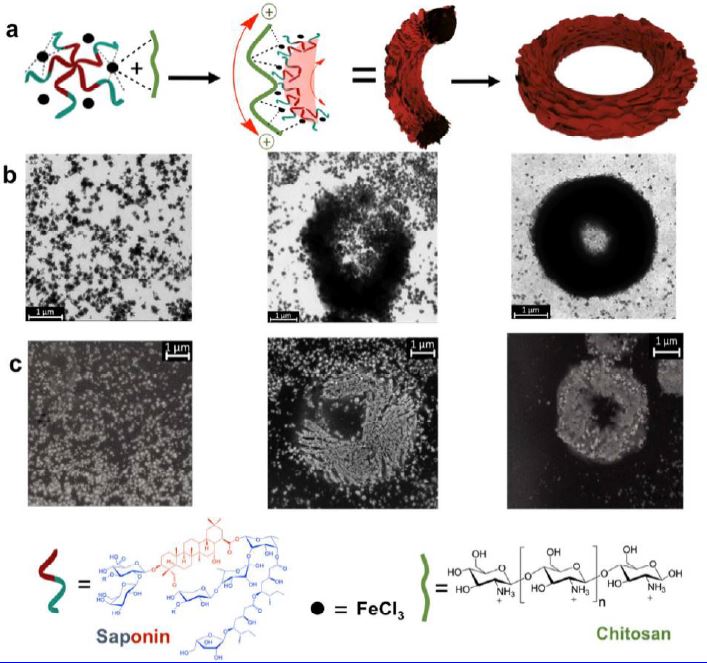

Toroidal structures based on self-assembly of predesigned building blocks are well established in literature however, spontaneous self-organization to prepare such structures has never been reported thus far. Here, organic-inorganic hybrid microtoroids synthesized by simultaneous coordination-driven assembly of amphiphilic molecules and hydrophilic polymers are reported. Mixing amphiphilic molecules with iron(III) chloride and hydrophilic polymers in water leads, within minutes, to the formation of star-like nanostructures. A spontaneous self-organization of these nanostructures is then triggered to form stable hybrid microtoroids. Interestingly, the toroids exhibit anisotropic hierarchical growth giving rise to a layered toroidal framework. These microstructures are mechanically robust and can act as templates to host metallic nanoparticles such as gold and silver. Understanding the nature of spontaneous assembly driven by multiple non-covalent interactions can help explain the well-ordered complexity of many biological organisms in addition to expanding the available tools to mimic such structures at a molecular level.
